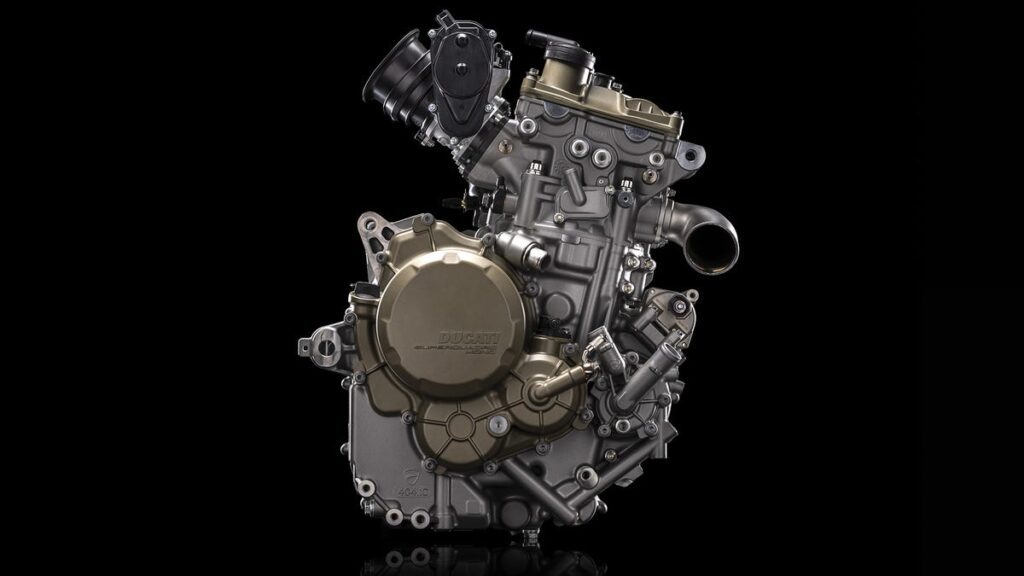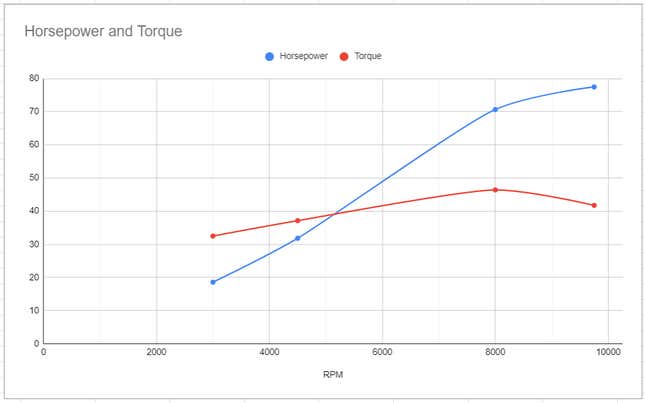Ducati's Fancy New Engine Might Not Feel Faster

Ducati, maker of high-performance engines with fancy valvetrains, has a new high-performance engine with a fancy valvetrain. The unique feature with this one is that it’s a mere single cylinder, lopped off of a twin-cylinder Panigale, which Ducati claims to be the most powerful thumper on the market. That’s true, based on pure horsepower, but I posit that it doesn’t matter — and that the rider may not even notice.
Nick Offerman On The Freedom Of Getting An Airstream RV
The new Ducati Superquadro Mono engine makes 85 horsepower, 10 more than the previous leader from Husqvarna. Of course, as any tuner will tell you, those peak numbers don’t matter much — it’s area under the curve that you really feel. Interestingly, though, Ducati gives us a lot more information than just those peak figures. From Ducati’s site:
The new Superquadro Mono is capable of reaching 10,250 rpm, values never achieved before with a road-going single-cylinder, and has a maximum power of 77.5 hp @ 9,750 rpm, a benchmark value for the segment, while the torque value is 46.4 lb-ft at 8,000 rpm.
70% of the torque is already available at 3,000 rpm, and the value never drops below 80% from 4,500 to 10,250 rpm. Power and torque can be further increased by 7 hp and torque by 2.9 lb-ft by fitting the racing exhaust designed for the new Mono. Benchmark maintenance intervals for the category: the oil change is scheduled every 9,000 miles, with the valve clearance check every 18,000 miles.
There are a few facts in here that we can use to get a general sense of the engine’s character:
32.48 lb-ft at 3,000 RPM37.12 lb-ft at 4,500 RPM46.4 lb-ft at 8,000 RPM77.5 horsepower at 9,750 RPM
Given that horsepower is just a function of torque and RPM, we can calculate out the rest of the values for these specific RPMs:
Screenshot: Google Sheets / Steve DaSilva
Then, graph those points, smooth the lines out a bit, and we get something resembling a dyno chart. It’s worth noting that this is based on formulas applied to limited data, and likely won’t match a real-world dyno graph, but it’s a helpful visual when thinking about these numbers compared to other competitors.

Screenshot: Google Sheets / Steve DaSilva
Compare this to a dyno run from the now-dethroned fastest thumper, the KTM 690 Enduro R (and Husqvarna 701 bikes), and you’ll notice some similarities. The torque curves on both bikes have near-identical shapes, and the numbers themselves are even similar — once you take drivetrain losses into account, the Ducati is likely less powerful across much of the rev range.
How Much Power Does The 2019 KTM 690 Enduro R Make?
The Ducati single is, by peak horsepower, the most powerful single-cylinder currently offered in a motorcycle (or it will be, once the motorcycle featuring it is revealed this coming Thursday). Yet, across much of its useful rev range, it likely won’t feel much faster than a Husqvarna 701 or KTM 690.
Peak numbers are fun, but you’re never going to keep a bike pegged at peak horsepower for a full track lap. When you’re talking about variable rev ranges, the area beneath the curve — how much torque and power you have to play with everywhere — matters more. In that respect, the Ducati appears to fare no worse than other high-powered thumpers. It’s just not much better, either.





